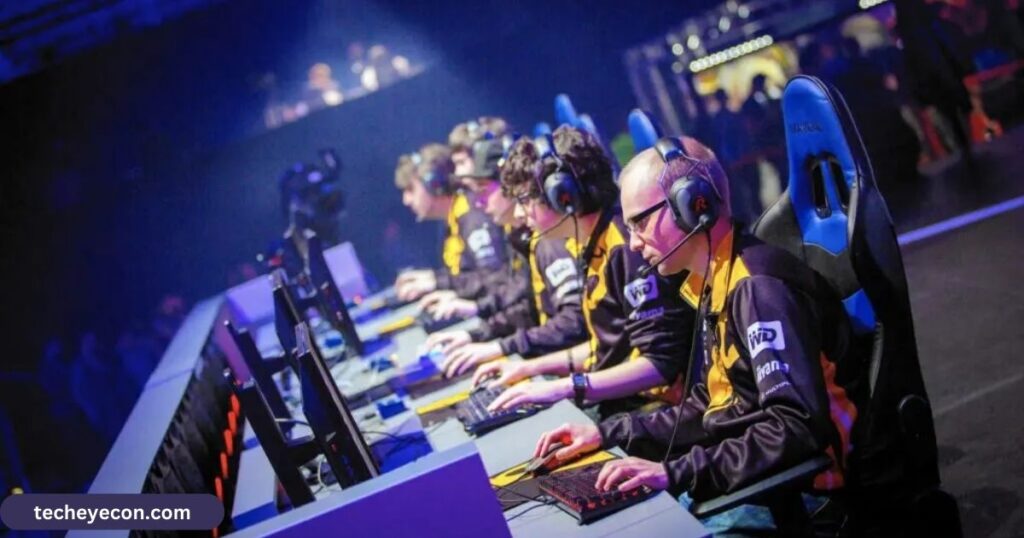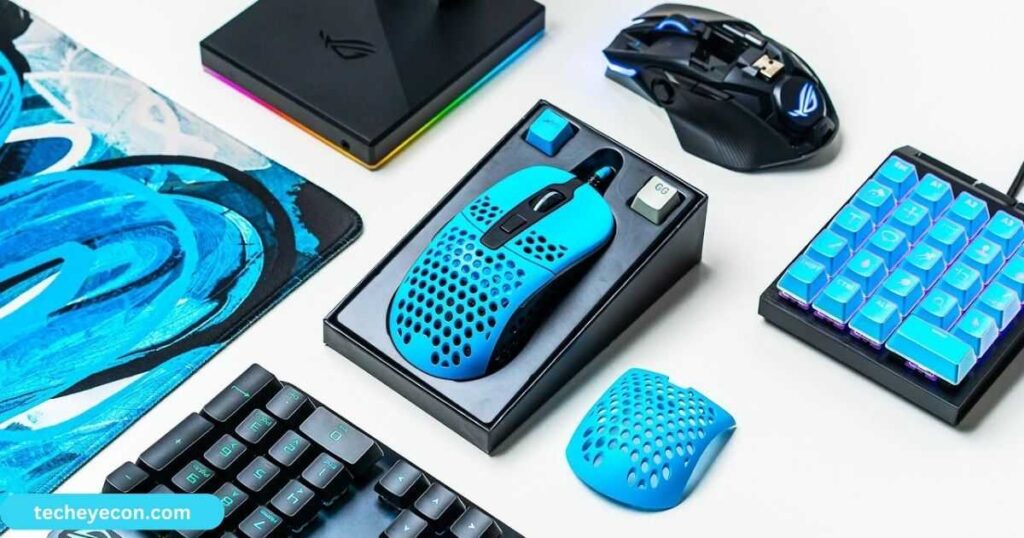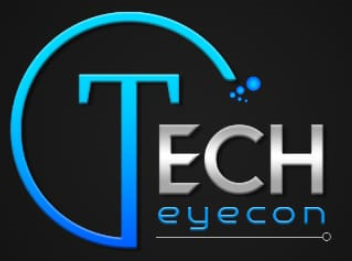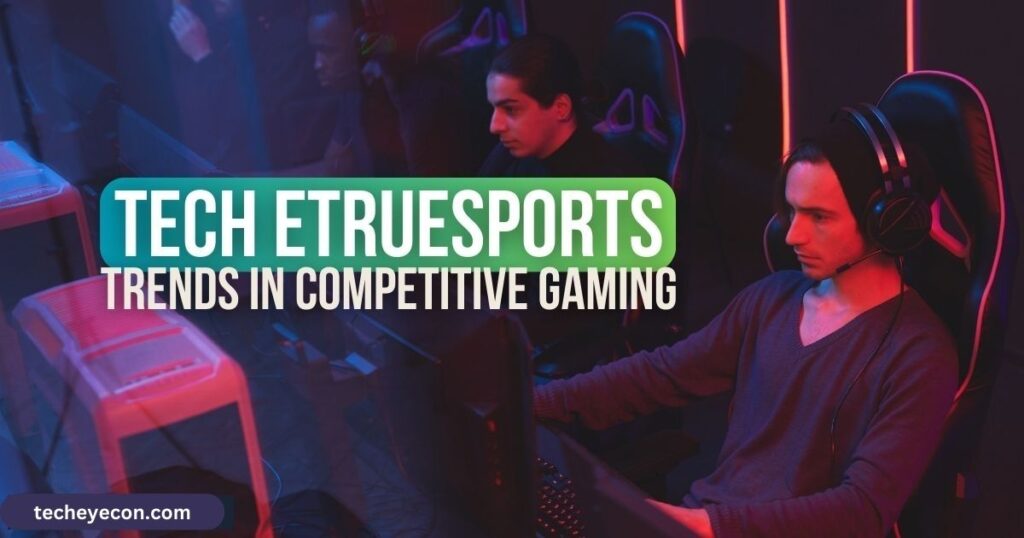eSports, also known as sports involve organized video game competitions ranging from local matches to large international tournaments. Players, either individually or, in teams compete against each other using games like League of Legends Dota 2 and Counter-Strike.
Technology plays a role in the world of eSports by enabling gamers to compete online. This allows players from around the world to engage in real-time matches. High-speed internet connections are essential for gameplay and live-streaming matches to audiences worldwide.
The use of hardware such as high-performance computers, gaming consoles, and specialized peripherals enhances both the gaming experience and performance levels. Virtual Reality (VR) and Augmented Reality (AR) technologies are being explored to create immersive experiences, for both players and spectators alike.
Overview Of Major Technological Advancements In Esports
Esports has seen immense innovations that spurred its rise. High-speed internet let gamers compete online in real-time globally. Advanced gear like powerful gaming PCs and specialized controllers optimized gameplay.
Streaming widened audiences as live events aired worldwide virtually. Now cutting-edge VR/AR immerse players and fans in new virtual worlds. Technology continues reshaping competitive gaming into an interactive digital spectacle.
Evolution Of Technology In E-Sports

E-sports has been levelled up continuously by evolving tech. Early LAN events faced lag issues which online play solved. Specialized tools then boosted skills, while high-refresh screens polished viewing.
Streaming platforms broadcast matches viral worldwide. Presently, data insights and AI are enhancing strategies and engagements. The future seems limitless as VR and other innovations transform tournaments increasingly.
Early Days Of Esports And Initial Technological Setups
In nurturing years, sluggish web posed issues for cross-server play. Hence local meets relied on LAN hubs with hobbyist gamers’ desktop setups. Small venues hosted competitors who brought PCs, with onlookers few in numbers.
Network speeds rising helpedQuake spark esports’ ignition, nevertheless lag hindered widespread enjoyment. Steady updates nourished competitive gaming’s growth from those initial seeds.
Development Of Online Multiplayer Platforms
Titans like Quake and Starcraft let matches globally. Though still in fledgling stage, online arenas sparked esports’ ignition. Games concurrently connecting distributed players worldwide revolutionized the scene.
Latency troubles lingered as internet infrastructure advanced gradually. Steady upgrades assured smoother cross-server games and viewing. This empowered esports’ embryonic international expansion on connected platforms.
Advances In Gaming Hardware And Peripherals

As processors and components upgraded continually, so too did gear. Specialized mice, keyboards enhanced accuracy skills and interactions. Potent gaming PCs allowed flawless framerates for Tryhards.
Consoles joined PC gaming competitively with standardized setups. Streamers utilized high-end capture cards to broadcast buttery-smooth. All innovations contributed to esports’ maturation into a premier entertainment portal.
Tech Etruesports Impact On The E-Sports Industry
Tech Etruesports fuels competitive gaming’s growth through pioneering efforts. Their potent PCs and optimized peripherals enrich players’ abilities. Software solutions sustain robust backend operations for all.
Streaming innovations broadcast events to swelling global crowds. Emerging VR/AR opportunities may reshape tournaments and fandom involvement. The company continues to propel esports to new technological heights.
Hardware Advancements
Top brands relentlessly refine their gear for supremacy. Key players release rigs tailored for split-second fragging. Mice fine-tuned for dizzying APM and keyboards designed to survive mashings.
Monitors smooth motion and reduce eyestrain during tense sessions. Headsets bring compressed audio for precise coordination in team fights. Hardware pushes limits to decide pixel-perfect skirmishes.
Software Solutions
As the arena surged forward, so too did the codes powering it. Platforms emerged to facilitate seamless matchmaking worldwide. Managers streamlined sign-ups and brackets with intuitive interfaces.
Commentator software sharpened remote broadcasts for swelling crowds. Developers optimized engines for high-competitive integrity. Analytics gleaned granular insights to hone tactics further. Solutions continuously propel the industry’s progress forward.
Streaming And Broadcasting
Live play enticed new spectator legions online. Pioneering platforms aggregated tournaments everywhere. Viewers grew as mobile made events portable. Versatile codecs compressed bandwidth-heavy broadcasts.
Dedicated streams analyzed replays and gameplay minutiae. Sponsorships and partnerships swelled as audiences ballooned. Broadcasting revolutionized how fandoms experience competition globally.
Virtual Reality (Vr) And Augmented Reality (Ar)
Novel immersive technologies on the horizon may reshape esports viewing. VR potentially transports audiences virtually to stadiums. Players may utilize AR for enhanced training simulations.
AI may generate personalized viewing experiences tailored for each fan. Sponsors eye new realms to reach consumers. Studios experiment with mixed reality broadcast enhancements. The future promises greater connectivity through emerging dimensions.
Data Analytics And Ai
Mountains of gameplay data fueled analytic revolutions within esports. AI parses patterns to predict picks, bans, and team strategies. Advanced algorithms uncover nuanced gameplay insights from petabytes of matches.
Teams employ tailored insights to gain strategic advantages on the virtual rift. Streamers optimize content via AI recommendations of popular champs. Analytics and AI herald esports’ transformation into a scientifically tuned sport.
Future Trends And Predictions
With each passing year, the realm evolves in unforeseen directions. Immersive technologies may reshape how fans experience live events. Mobile further drives accessibility worldwide. Hybrid games could appeal to broad new cohorts.
Varied monetization and personalized content keep user engagement high. Franchising and regional leagues gestate grassroots community nurturing. The coming decade portends even greater elevation for global competitive gaming.
Tech Etruesports Trends In Competitive Gaming
Tech Etruesports leads advances in hardware and infrastructure for pro gaming. Bespoke rigs push titles’ limits for split-second frames. Dedicated monitors optimize viewing for LAN venues and remote match tracking.
Headsets immerse players in precise positional audio landscapes. Low-latency peripherals uphold demands of intense micro-skills. Evolving software optimizes tournament operations at global scale. Competitive esports is primed for the future thanks to cutting-edge innovation.
Predictions For Future Growth And Technological Integration
Once a niche segment, esports steadily expands its cultural influence. Mobile gaming drives accessibility to diverse new demographics. Immersive VR/AR technologies may reshape how fans experience live tournaments. Advanced data analytics fuel optimized player training methodologies.
AI enhances competitive experiences through personalized insights and recommendations. Franchising nurtures dedicated regional fan bases worldwide. Technological developments promise continued elevation of global competitive entertainment.
FAQs
What Is Tech Etruesports?
Tech Etruesports pushes hardware to its limits for LAN dominance. Custom rigs primed to secure any pixel-perfect victory.
How Does Tech Etruesports Contribute To The Esports Industry?
Champion-caliber gear drives competitive gaming’s evolution. Tech Etruesports innovations uplift esports for decades to come.
What Types Of Gaming Peripherals Does Tech Etruesports Offer?
Low-latency keyboards unleash lightning-fast play in seconds. Pristine visuals shine through cutting-edge monitors.
How Does Tech Truesports Use Ai In Esports?
AI analyzes strategies to guide pro-level practice precision. Machine learning sharpens competitive play like a digital sword.
What Future Trends Can We Expect From Tech Etruesports?
Tomorrow’s gear integrates VR to transport fans like players. AI and analysis merge man with machine in hyper-competitive symphonies.
What Is Competitive Gaming In Esports?
Esports athletes hone pixel-perfect prowess in game worlds. League Legends earned through skills-honed in online arenas.
Is Esports A Sport?
While lacking physical exertion, esports champions prove their talent and train with the same competitive spirit as any athlete.
When Did Esports Start?
Long before mainstream recognition, pixelated champions battled arcade high scores in the 70s. A Space Invaders competition in 1980 launched esports to bigger arena screens.
Conclusion
Esports has evolved tremendously from its early arcade days into a global phenomenon. Through innovations from companies like Tech Etruesports, competitive gaming continues powering ahead to new heights.
Their leading edge tech drives players and spectator experiences to higher levels. The future of esports appears brighter than ever before. New frontiers in AI, VR and beyond will transform both the competitive and viewing aspects of this ascendant industry and sport.








